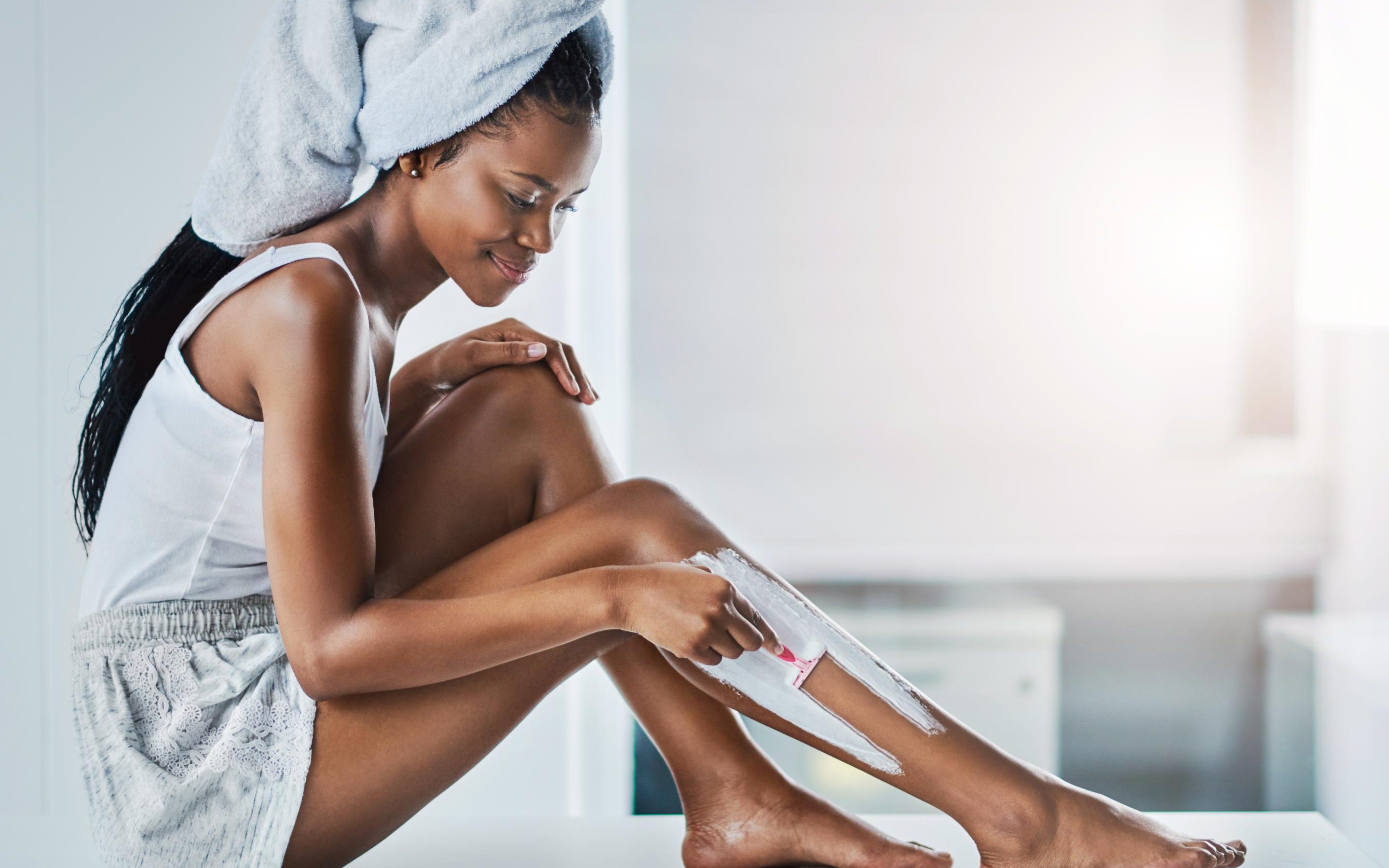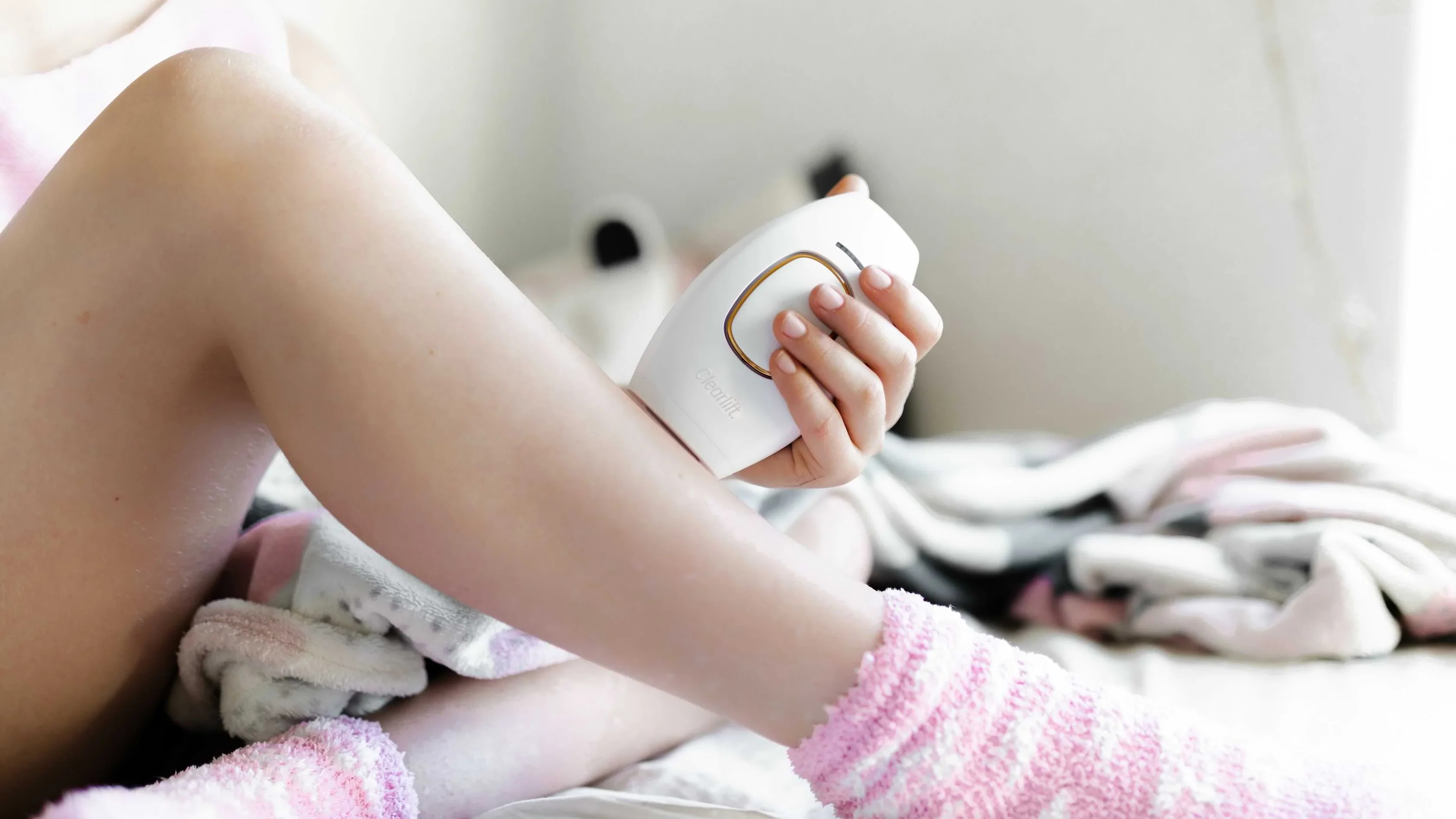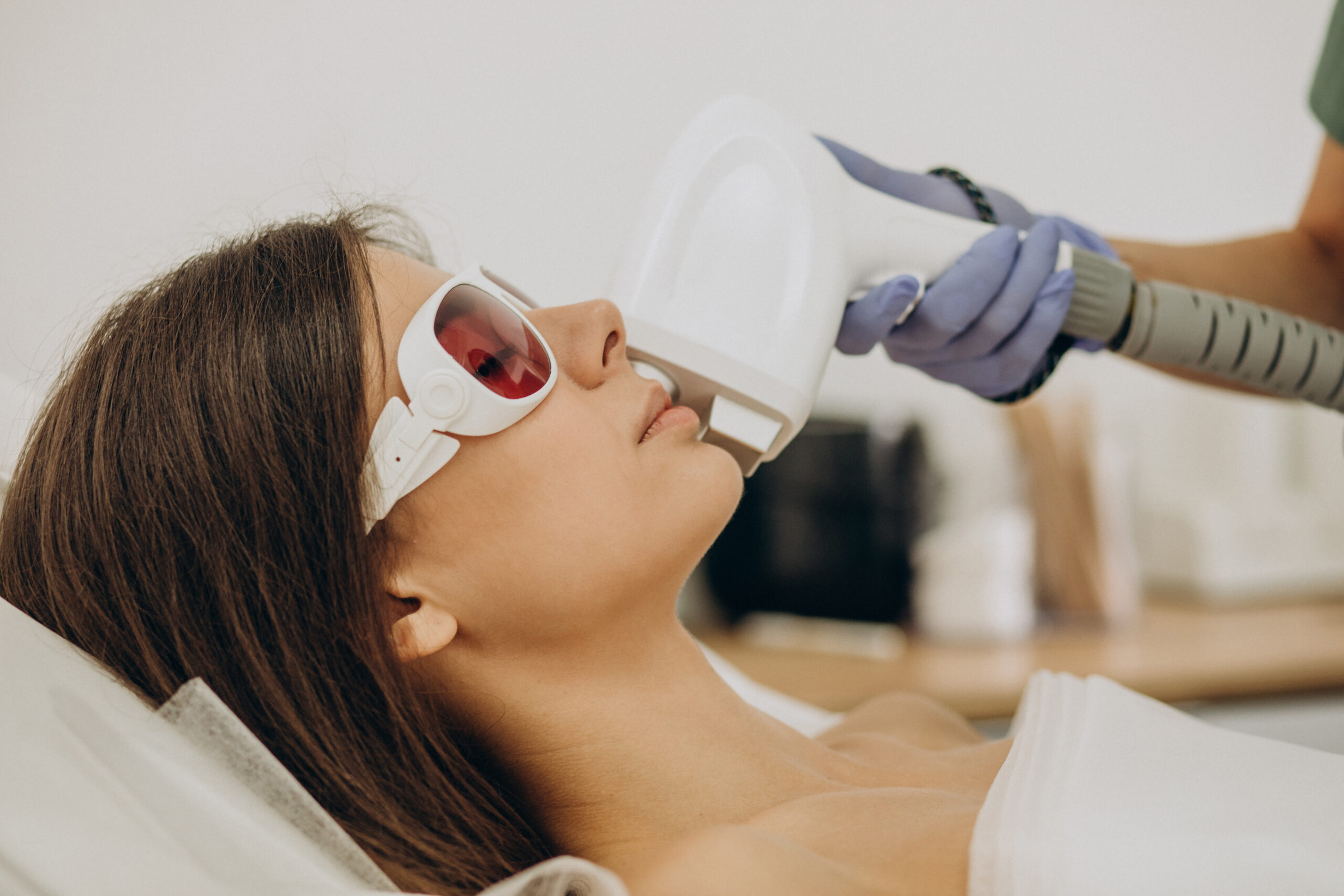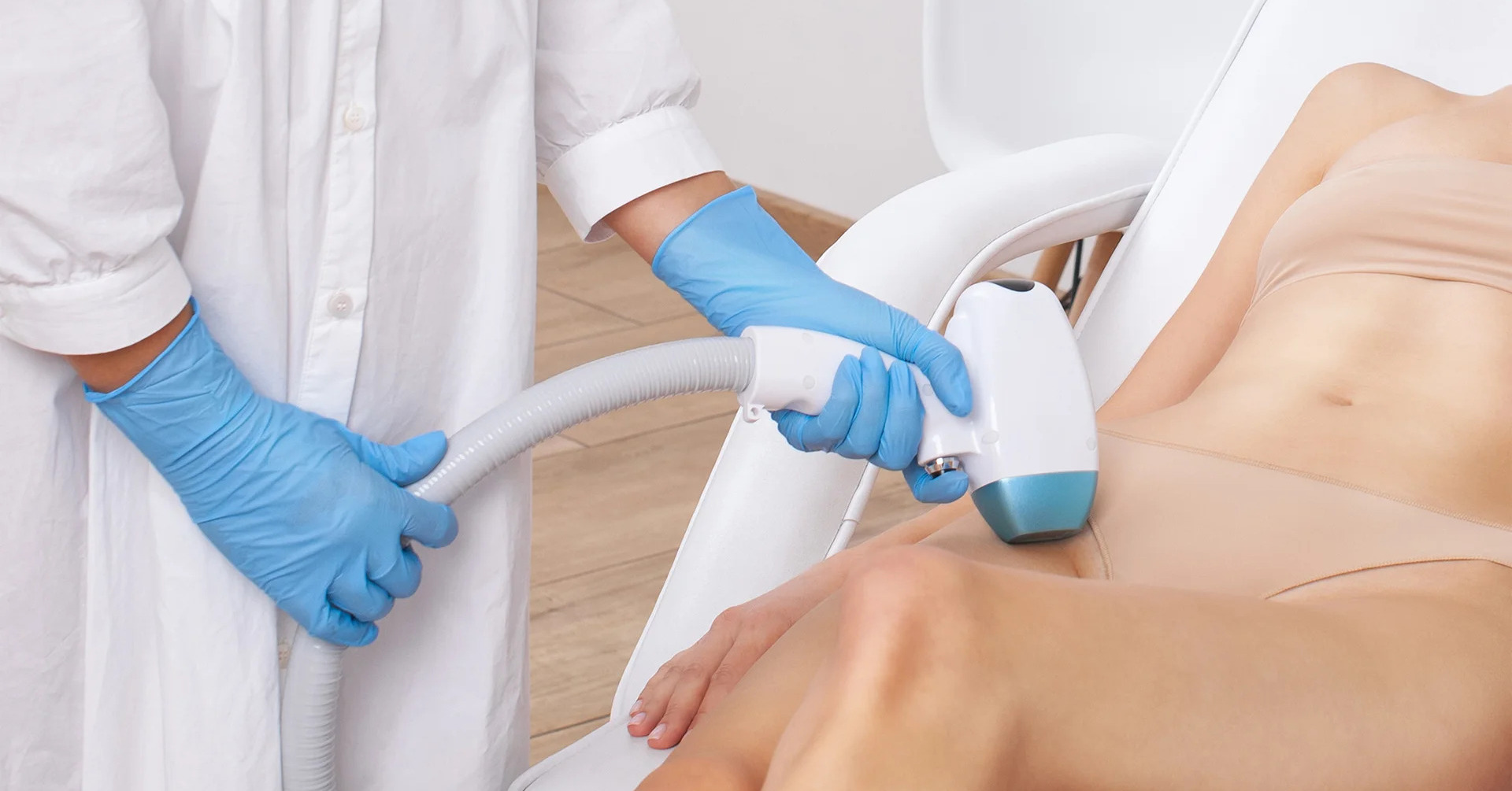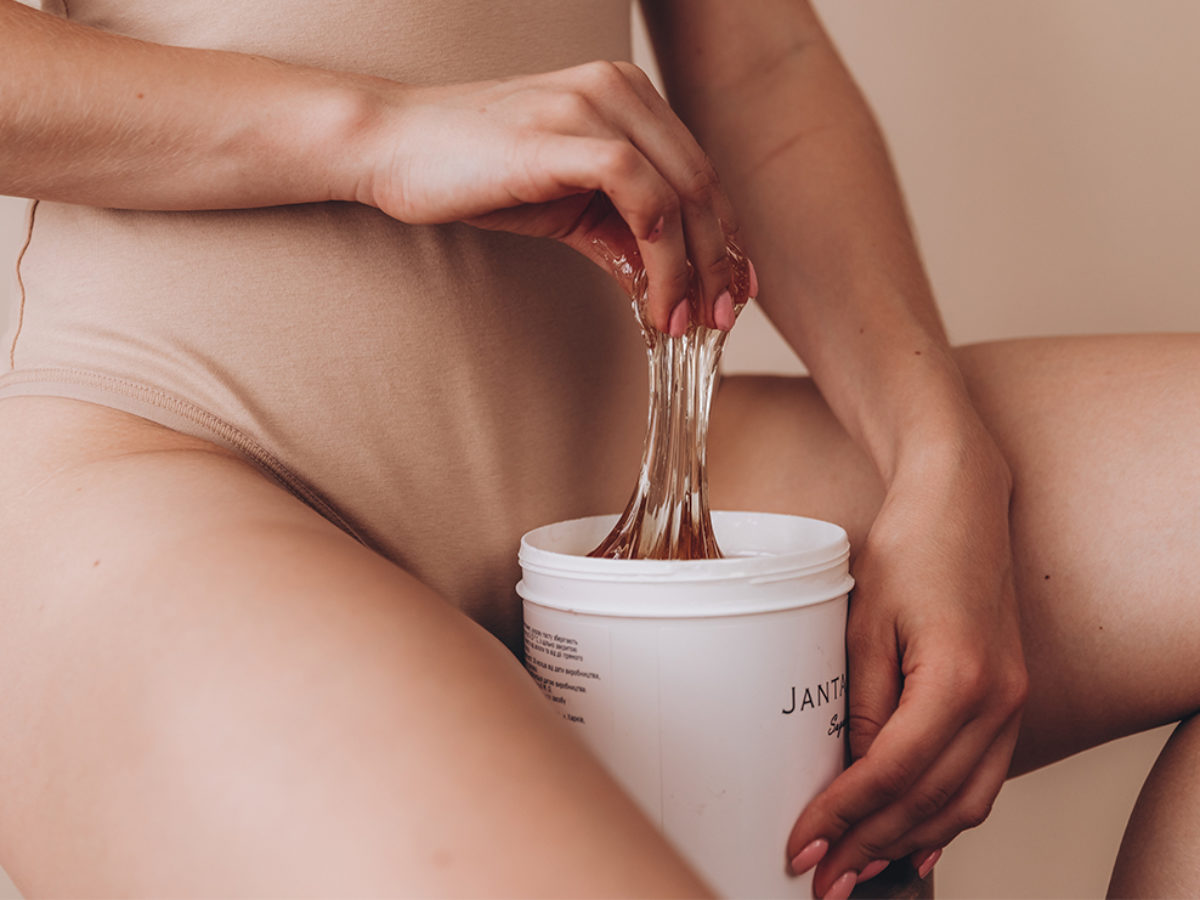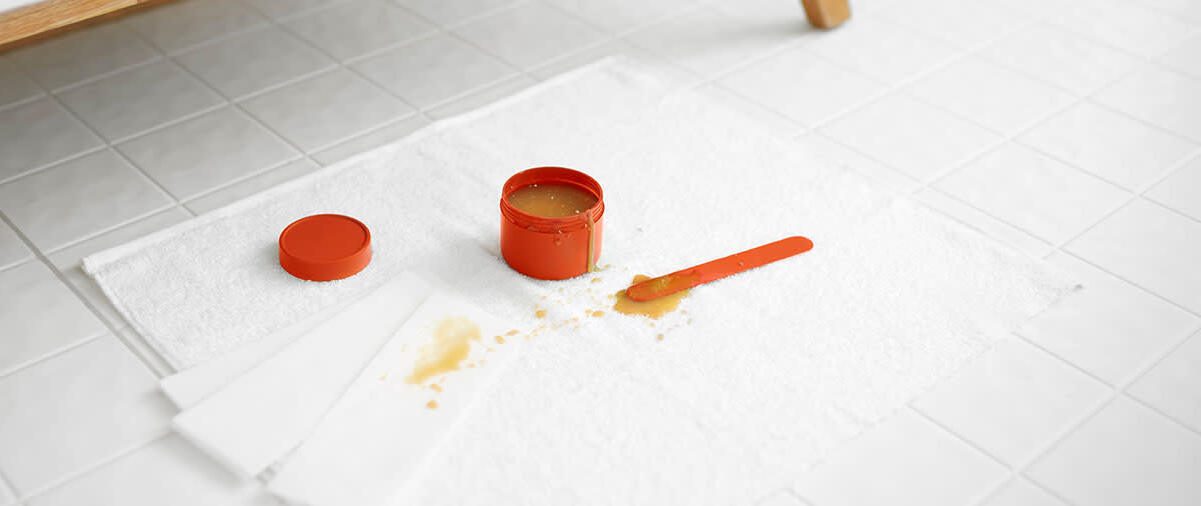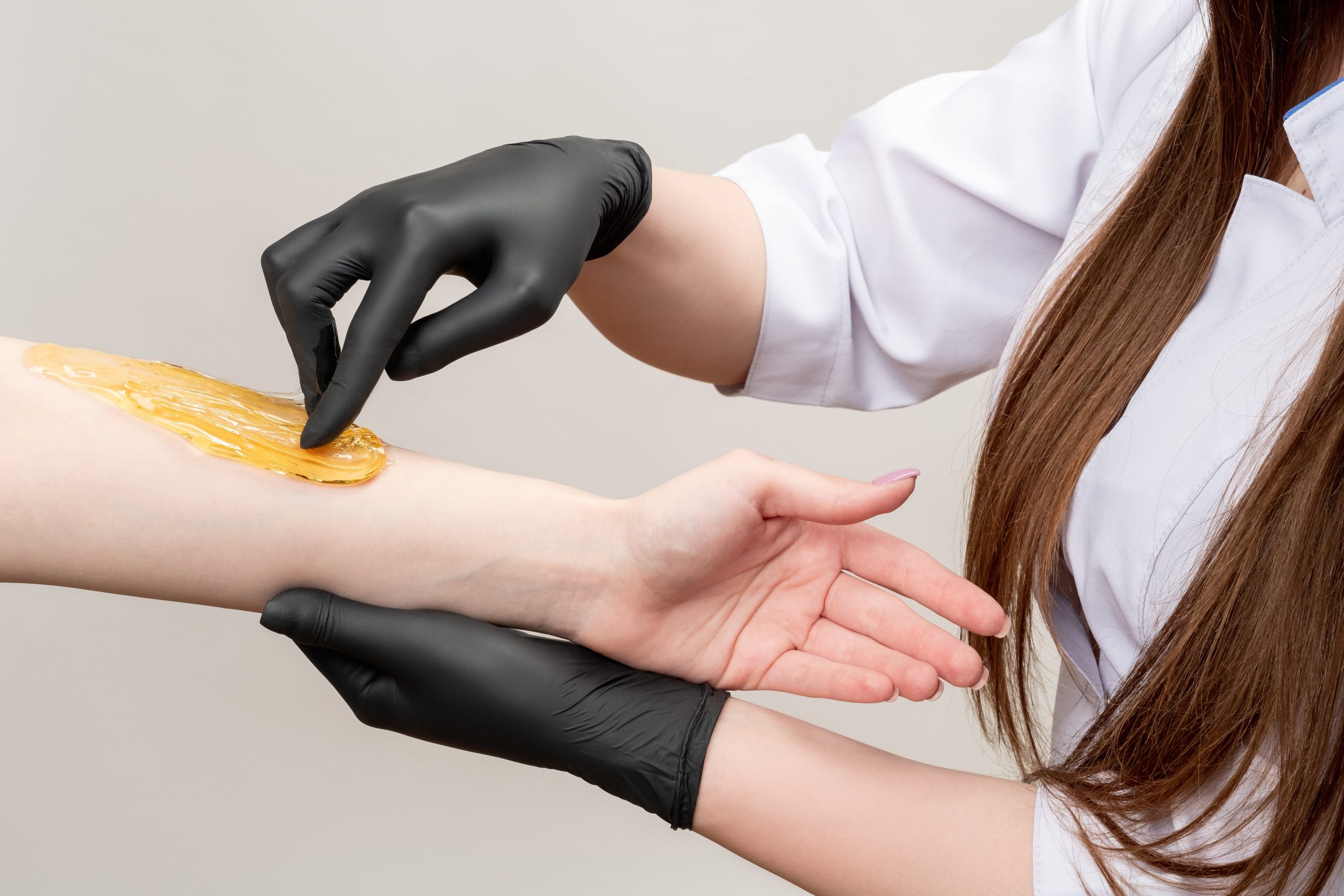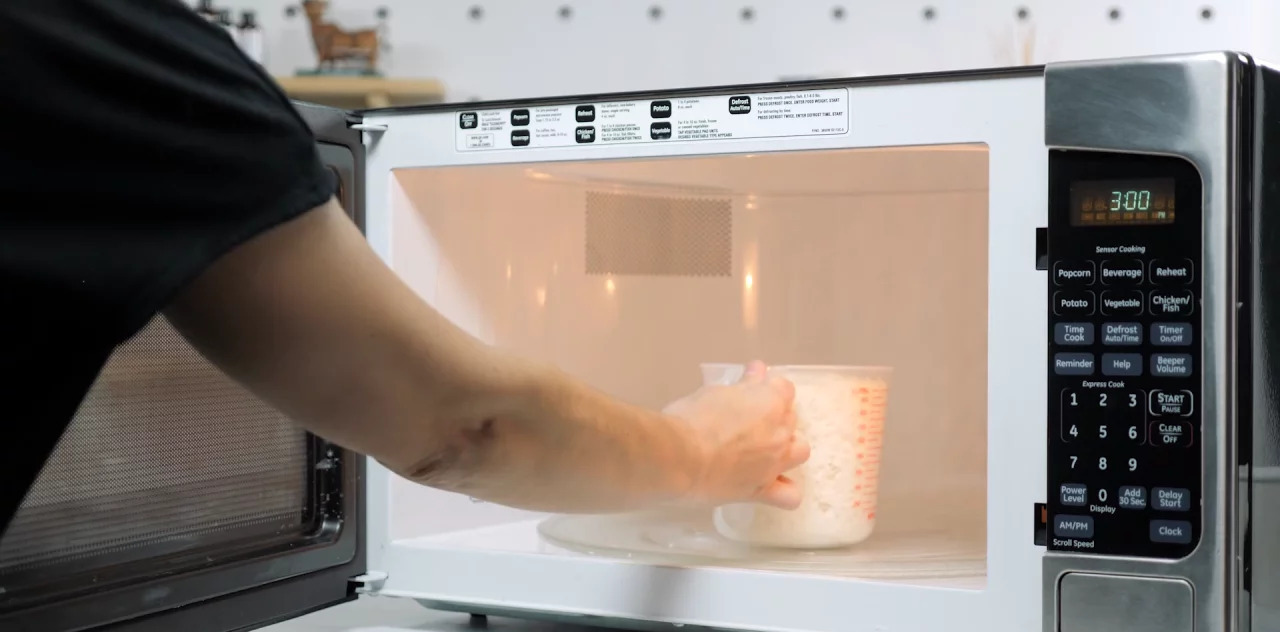Home>How-to Guides>For Women>How To Make Sugar Paste For Hair Removal
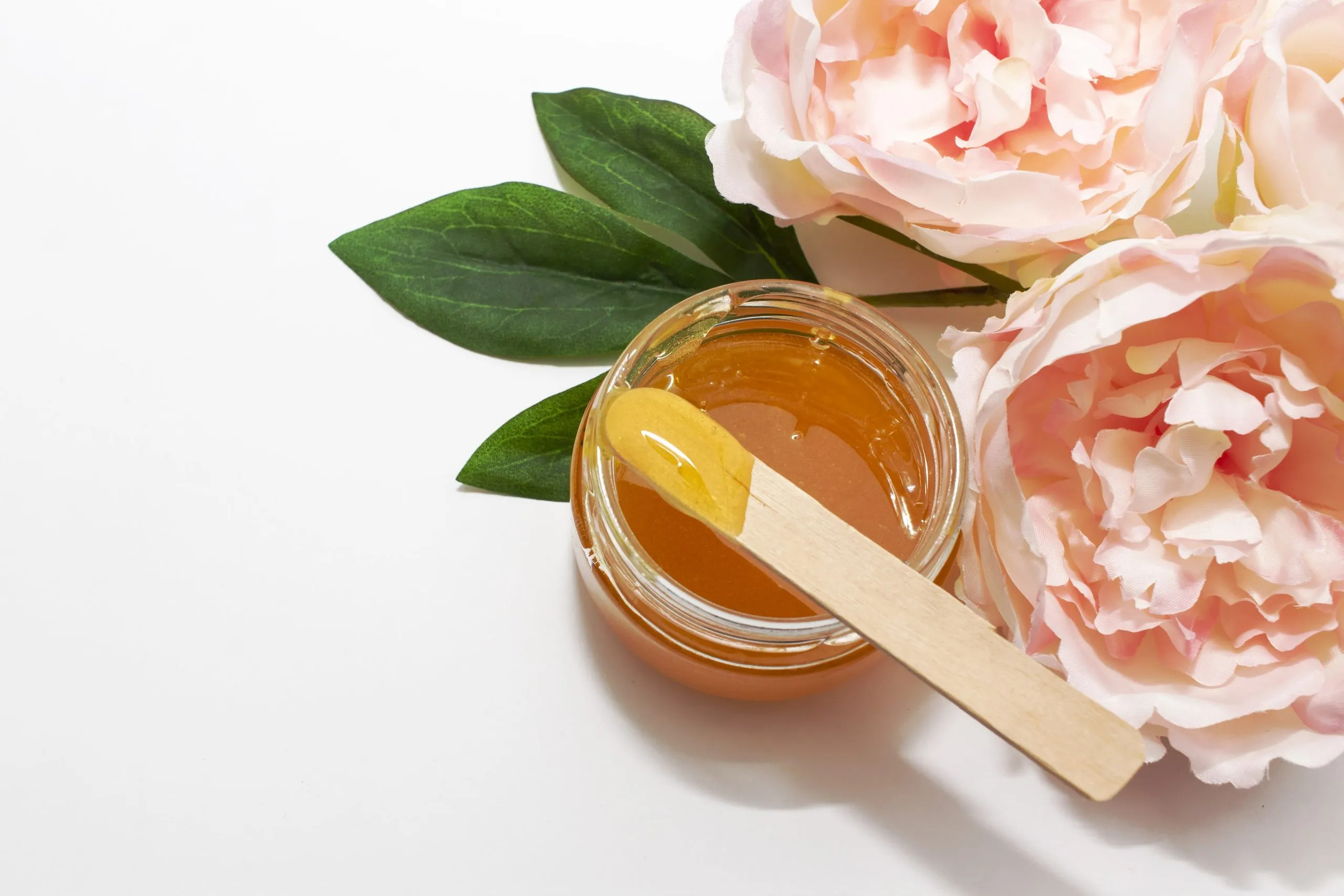

For Women
How To Make Sugar Paste For Hair Removal
Modified: August 5, 2023
Learn how to make sugar paste for hair removal at home in a few simple steps. Perfect for women looking for a natural and effective method to remove unwanted hair.
(Many of the links in this article redirect to a specific reviewed product. Your purchase of these products through affiliate links helps to generate commission for Under-tec.com, at no extra cost. Learn more)
Table of Contents
- Introduction
- What is Sugar Paste?
- Benefits of Using Sugar Paste for Hair Removal
- Ingredients Needed to Make Sugar Paste
- Step-by-Step Instructions for Making Sugar Paste
- How to Apply and Remove Sugar Paste for Hair Removal
- Tips for Successful Hair Removal with Sugar Paste
- Precautions and Side Effects of Using Sugar Paste
- Alternatives to Sugar Paste for Hair Removal
- Conclusion
Introduction
Unwanted hair is a common concern for many women. Over the years, various methods of hair removal have been developed, each with its own pros and cons. One method that has gained popularity in recent years is using sugar paste for hair removal.
Sugar paste, also known as sugaring, is a natural and gentle alternative to traditional methods such as waxing or shaving. It has been used for centuries in the Middle East and is now gaining recognition worldwide for its effectiveness and skincare benefits.
In this article, we will explore what sugar paste is, the benefits of using it for hair removal, the ingredients needed to make it, step-by-step instructions for preparing the paste, how to apply and remove it, as well as some tips for successful hair removal. We will also discuss precautions and possible side effects, as well as alternative methods for those who prefer different options.
So if you’re tired of dealing with the pain, redness, and irritation that often come with traditional hair removal methods, keep reading to discover the wonders of sugar paste and how it can revolutionize your hair removal routine.
What is Sugar Paste?
Sugar paste, also known as sugaring, is a natural hair removal method that has been used for centuries in the Middle East and is gaining popularity worldwide. It is a simple yet effective technique that involves using a mixture of sugar, lemon juice, and water to create a sticky paste that adheres to the hair, allowing for easy removal from the root.
The sugar paste is made from all-natural ingredients, making it a gentle and safe option for hair removal. Unlike traditional waxing, which can contain harsh chemicals, sugar paste is free from synthetic additives, fragrances, and dyes, reducing the risk of skin irritation or allergic reactions.
One of the key advantages of using sugar paste is its versatility. It can be used on various body parts, including the face, arms, legs, bikini area, and even sensitive areas like the underarms. The paste is also suitable for all skin types, including sensitive or delicate skin, as it does not adhere to the live skin cells, minimizing the chances of damage or discomfort.
Another unique feature of sugar paste is its water-soluble nature. Unlike wax, which requires the use of solvents for removing any residue, sugar paste can be easily rinsed off with warm water. This makes the clean-up process quick and convenient, without the need for additional products or chemicals.
Overall, sugar paste offers a natural, gentle, and effective alternative to traditional hair removal methods. With its ability to remove hair from the root and leave the skin feeling smooth and rejuvenated, it’s no wonder that more and more women are turning to this ancient technique for their hair removal needs.
Benefits of Using Sugar Paste for Hair Removal
When it comes to hair removal, there are various methods to choose from. However, using sugar paste has gained popularity for good reason. Here are some of the key benefits of using sugar paste for hair removal:
- Gentle on the Skin: Sugar paste is made from natural ingredients such as sugar, lemon juice, and water, making it gentle on the skin. Unlike waxing, which can sometimes lead to skin irritation or inflammation, sugar paste is less likely to cause these issues. It adheres only to the hair and not the skin, reducing the risk of redness, bumps, or ingrown hairs.
- Longer Lasting Results: Sugaring effectively removes hair from the root, resulting in slower regrowth. Compared to shaving, where hair grows back within a few days, sugar paste can provide hair-free results for up to six weeks. This means fewer touch-ups and longer periods of smooth, hairless skin.
- Natural Ingredients: Sugar paste is made from simple ingredients that are typically found in most kitchens. It doesn’t contain harsh chemicals, fragrances, or dyes, making it a safer and more natural alternative to other hair removal methods. This is especially beneficial for individuals with sensitive skin or allergies.
- Exfoliating Effect: When sugar paste is applied to the skin, it acts as a gentle exfoliator, removing dead skin cells and leaving the skin feeling smoother and softer. This dual-action of hair removal and exfoliation results in an improved overall skin texture and appearance.
- Less Painful: Many people find sugaring to be less painful compared to waxing. The paste adheres primarily to the hair and not the skin, resulting in a gentler removal process. Additionally, since the sugar paste is applied at room temperature and does not require heat, the risk of burns or discomfort is significantly reduced.
- Cost-Effective: Making sugar paste at home is a cost-effective option for hair removal. The ingredients are readily available and affordable, making it an economical choice compared to salon treatments or purchasing commercial waxing products.
With all these benefits, it’s no wonder that sugar paste has become a popular choice for those looking for a natural, effective, and skin-friendly method of hair removal.
Ingredients Needed to Make Sugar Paste
Making sugar paste at home is a simple and economical way to enjoy the benefits of this natural hair removal method. The ingredients required are minimal and can be found in most kitchens. Here are the essential ingredients for making sugar paste:
- Sugar: The main ingredient for sugar paste is sugar itself. Granulated white sugar is commonly used, but other varieties such as brown sugar or raw sugar can also work well.
- Lemon Juice: Lemon juice is another key component of sugar paste. It serves multiple purposes as it helps to break down the sugar, adds a slight acidity to the paste for preservation, and provides a fresh scent.
- Water: Water is necessary to create the right consistency for the sugar paste. It helps to dissolve the sugar and combine it with the lemon juice to form a malleable paste.
That’s it! With just these three simple ingredients, you can make your own sugar paste for hair removal. The exact measurements may vary depending on the recipe you choose, but a common ratio is usually one cup of sugar, one-fourth cup of lemon juice, and one-fourth cup of water. You can adjust the quantities as needed to achieve the desired consistency.
While the basic ingredients are the same, some variations of sugar paste recipes may include additional ingredients such as honey, cornstarch, or essential oils. These extras can provide added benefits like moisturizing properties or soothing effects on the skin. However, they are not essential and can be omitted if you prefer a more straightforward sugar paste recipe.
It’s also worth noting that ready-made sugar paste can be purchased at stores or online. These pre-made options may include additional ingredients for scent or preservation purposes. However, making your own sugar paste allows you to have full control over the ingredients and customize it according to your preferences and skin needs.
With just a few basic ingredients and a little bit of preparation, you’ll be ready to make your own sugar paste and experience the wonders of this natural hair removal method.
Step-by-Step Instructions for Making Sugar Paste
Making sugar paste at home is a straightforward process that requires minimal ingredients and equipment. Follow these step-by-step instructions to create your own sugar paste for hair removal:
- Gather the ingredients: Collect the necessary ingredients – sugar, lemon juice, and water – in the specified quantities. Having everything prepared and measured beforehand will make the process smoother.
- Mix the sugar and lemon juice: In a medium-sized saucepan, combine the sugar and lemon juice. Stir them together until they are well combined. The mixture should resemble wet sand.
- Add water and stir: Gradually add the water to the saucepan while stirring continuously. The water will help dissolve the sugar and create a sticky paste. Continue stirring until the mixture is smooth and all the sugar has dissolved.
- Cook the mixture: Place the saucepan on the stove over low to medium heat. Heat the mixture, stirring regularly, until it reaches a boil. Once it starts boiling, reduce the heat to low and let it simmer for a few minutes. Stir occasionally to prevent burning.
- Check the consistency: To test the consistency of the sugar paste, place a small amount on a heat-resistant surface or plate. Allow it to cool for a few seconds, then try to roll it into a ball. It should form a pliable and sticky ball without sticking too much to your hands. If it’s too soft, continue simmering for a little longer. If it’s too hard, add a small amount of water and stir until desired consistency is reached.
- Allow it to cool: Once the sugar paste has reached the desired consistency, remove it from heat and let it cool down to a comfortable temperature. Be sure not to let it cool completely, as it will become too hard to work with.
- Transfer to a container: Once the sugar paste has cooled, transfer it to a clean and airtight container for storage. Choose a container with a tight lid to keep the sugar paste fresh and prevent it from drying out.
And there you have it! Your homemade sugar paste is now ready for use. Remember to test the temperature of the sugar paste on a small area of your skin before applying it to larger areas to ensure it’s comfortable and safe for use. With practice, you’ll become more familiar with the consistency and application process to achieve the best hair removal results.
Now that you know how to make your own sugar paste, it’s time to learn how to apply and remove it effectively for hair removal, which we’ll discuss in the next section.
How to Apply and Remove Sugar Paste for Hair Removal
Now that you have prepared your homemade sugar paste, it’s time to learn how to apply it for effective hair removal. Follow these steps to apply and remove sugar paste:
- Prepare your skin: Start by ensuring that your skin is clean and dry. Exfoliate the area a day before applying the sugar paste to remove any dead skin cells and facilitate better hair removal.
- Take a small amount of sugar paste: Using your fingers or a clean spatula, grab a small amount of sugar paste. It should be about the size of a walnut or golf ball, depending on the area you’re treating.
- Warm up the paste: Roll the sugar paste between your hands to warm it up slightly. This will make it more pliable and easier to spread on the skin.
- Apply the paste against the hair growth: Apply the sugar paste to the desired area in the opposite direction of hair growth. Use firm pressure to ensure that the paste adheres well to the hair.
- Smooth it out: With your fingers or a spatula, smooth out the sugar paste in the direction of hair growth. This helps the paste grab the hair firmly and allows for cleaner and more effective hair removal.
- Quickly remove the paste: Hold the skin taut and swiftly pull off the sugar paste in the direction of hair growth. Ensure to keep the pull parallel to the skin’s surface rather than pulling upward.
- Repeat the process: Continue applying and removing the sugar paste to the neighboring areas until you have covered the entire area you wish to treat. Remember to warm up the paste in between each application for optimal results.
- Remove any residue: After hair removal, use a damp cloth or washcloth to gently wipe away any leftover sugar paste from your skin. Follow up with a cold compress or soothing aloe vera gel to calm the skin.
It’s normal to experience some redness or mild discomfort after sugar paste hair removal, but it should subside within a few hours. If necessary, you can apply a soothing lotion or moisturizer to hydrate and soothe the skin.
Remember, practice makes perfect when it comes to sugar paste hair removal. With time, you’ll become more skilled at applying and removing the paste, resulting in smoother and longer-lasting hair-free skin.
Now that you know how to apply and remove sugar paste, let’s explore some tips to ensure successful hair removal in the next section.
Tips for Successful Hair Removal with Sugar Paste
While sugar paste is a relatively simple and effective method for hair removal, there are some tips and tricks that can help you achieve the best possible results. Here are some handy tips to enhance your sugar paste hair removal experience:
- Ensure proper hair length: For the sugar paste to grip the hair effectively, it’s essential that the hair is neither too short nor too long. Aim for hair length of about 1/4 to 1/2 inch for optimal results.
- Exfoliate regularly: Regular exfoliation helps prevent the buildup of dead skin cells, which can interfere with the sugar paste’s ability to adhere to the hair. Exfoliate the skin gently a few days before hair removal to achieve smoother and more efficient results.
- Hold the skin taut: To minimize discomfort and improve hair removal, hold the skin taut with one hand while swiftly pulling off the sugar paste with the other hand. This ensures a smoother and cleaner hair removal process.
- Apply in the opposite direction and remove with the direction of hair growth: Apply the sugar paste against the direction of hair growth and remove it in the same direction as hair growth. This allows the paste to adhere to the hairs and facilitates more effective removal.
- Optimize room temperature: Sugar paste should have a slightly warmer temperature than room temperature for ease of application. If the paste is too cold and stiff, warm it up in your hands or use a microwave for a few seconds to soften it without overheating.
- Consider using talcum powder: Dusting some talcum powder or cornstarch on the skin before applying the sugar paste can help enhance its grip on the hair, resulting in better hair removal.
- Take breaks if needed: If you find that your skin is getting too sensitive or you’re experiencing discomfort, take short breaks between hair removal sessions. It’s important to listen to your body and adjust as needed.
- Moisturize and care for your skin: After hair removal, follow up with a gentle moisturizer or soothing lotion to hydrate and nourish the skin. Avoid using harsh chemical-based products, as they can irritate the freshly treated skin.
- Practice patience and consistency: It may take a few attempts to become proficient in sugar paste hair removal. Don’t get discouraged if you don’t achieve perfect results right away. With practice and regular treatments, you’ll master the technique and enjoy smooth, hair-free skin.
By following these tips, you can enhance the effectiveness and comfort of your sugar paste hair removal sessions. Remember, everyone’s experience may vary, so it’s important to find what works best for you and your unique skin and hair type.
Now that we’ve covered the tips, it’s crucial to be aware of any precautions and possible side effects of using sugar paste for hair removal. We’ll discuss these in the next section.
Precautions and Side Effects of Using Sugar Paste
While sugar paste is generally a safe and gentle method of hair removal, it’s essential to take certain precautions and be aware of potential side effects. Here are some precautions to keep in mind and possible side effects to watch out for:
- Allergies: Although rare, some individuals may have an allergic reaction to one or more of the ingredients in sugar paste. It’s always a good idea to perform a patch test on a small area of the skin before applying the paste to larger areas to ensure there are no adverse reactions.
- Skin Sensitivity: Some individuals with sensitive skin may experience redness, mild irritation, or slight discomfort after sugar paste hair removal. However, these symptoms usually subside within a few hours. If you have highly sensitive skin, it’s advisable to consult a dermatologist before trying sugar paste.
- Skin Conditions: If you have any underlying skin conditions such as eczema, psoriasis, or open wounds, it’s best to avoid using sugar paste as it may further irritate or worsen those conditions. Consult with a dermatologist for suitable hair removal alternatives.
- Burns or Heat Sensitivity: Sugar paste is typically applied at room temperature and does not require heat. However, if the paste gets too hot or is heated incorrectly, it can cause burns or discomfort. Always be cautious and test the temperature of the paste before applying it to your skin.
- Ingrown Hairs: While sugar paste can help reduce the occurrence of ingrown hairs compared to other hair removal methods, there is still a possibility of developing ingrown hairs. Regular exfoliation and proper aftercare can help minimize this risk.
- Unwanted Hair Breakage: In some cases, hair may break instead of being removed from the root, leading to potential regrowth sooner than anticipated. This can occur if the hair is too short or not properly gripped by the sugar paste. Ensure that your hair is at the appropriate length before attempting hair removal.
- Professional Assistance: If you’re unsure or uncomfortable with performing sugar paste hair removal yourself, it’s advisable to seek professional assistance from a trained esthetician who specializes in sugaring. They can ensure proper application and provide guidance for optimum results.
It’s important to know your body and any limitations or sensitivities you may have when using sugar paste for hair removal. If you experience severe pain, prolonged redness, or adverse reactions, it’s recommended to discontinue use and consult a healthcare professional.
Now that you’re aware of the precautions and potential side effects, let’s explore alternative methods for hair removal in the next section.
Alternatives to Sugar Paste for Hair Removal
While sugar paste is a fantastic option for hair removal, there are several alternatives available that may better suit your preferences or circumstances. Here are some popular alternatives to consider:
- Waxing: Waxing is a common hair removal method that involves applying hot or cold wax to the skin and then swiftly removing it along with the hair. It provides longer-lasting results and helps weaken hair follicles over time. It’s best to seek professional assistance for waxing, although there are at-home waxing kits available.
- Shaving: Shaving is a convenient and quick method of hair removal. It involves using a razor to cut the hair at the skin’s surface. While shaving provides immediate results, hair regrowth occurs relatively quickly, generally within a few days.
- Epilating: Epilating involves using an electrical device called an epilator, which mechanically removes hair from the root. It works by grasping multiple hairs simultaneously and pulling them out. This method offers longer-lasting results compared to shaving, but it can be more painful and may cause temporary redness or irritation.
- Depilatory Creams: Depilatory creams, also known as hair removal creams, contain chemical compounds that dissolve hair at the skin’s surface. They are applied to the skin and left on for a designated time before being wiped away, taking the hair with them. These creams provide a quick and painless hair removal option, but they may have a strong odor and can cause skin irritation in some individuals.
- Laser Hair Removal: Laser hair removal is a long-lasting hair removal method that uses laser technology to target and damage hair follicles, inhibiting future hair growth. It requires multiple sessions and is best performed by a trained professional. Laser hair removal offers permanent reduction in hair growth, but it can be expensive and may cause temporary skin redness or discomfort.
- Threading: Threading is a technique that uses a twisted cotton thread to remove hair from the root. It is commonly used for shaping eyebrows but can also be used on other areas of the face. Threading provides precise results and is suitable for individuals with sensitive skin or those using certain medications that may restrict other hair removal options.
Each of these alternatives has its own pros and cons, and the choice ultimately depends on your preferences, budget, and desired results. It’s important to consider factors such as pain tolerance, skin sensitivity, and maintenance requirements when selecting the right method for you.
If you’re unsure about which hair removal method to choose, or if you have specific concerns or conditions, it’s always a good idea to consult with a dermatologist or a licensed esthetician who can provide personalized advice and recommendations.
Now that you’re familiar with various alternatives, you can make an informed decision based on what works best for your individual needs and preferences.
Conclusion
Choosing the right method of hair removal is a personal decision that depends on factors such as effectiveness, convenience, budget, and skin sensitivity. Sugar paste offers a natural, gentle, and effective alternative to traditional hair removal methods. With its ability to remove hair from the root, leave the skin feeling smooth, and minimize the risk of irritation, sugar paste has gained popularity among those seeking an organic and skin-friendly solution.
In this article, we’ve explored what sugar paste is and its many benefits, such as being gentle on the skin, providing longer-lasting results, and using natural ingredients. We’ve provided step-by-step instructions for making sugar paste at home and tips for successful application and removal. We’ve also covered precautions and possible side effects to ensure a safe and comfortable experience.
However, it’s important to note that no hair removal method is one-size-fits-all, and different individuals may have unique preferences and considerations. We’ve also discussed alternative methods like waxing, shaving, epilating, depilatory creams, laser hair removal, and threading to give you a comprehensive overview of your options.
Ultimately, the choice of hair removal method is up to you. Consider factors such as convenience, desired results, pain tolerance, and skin sensitivity when selecting the method that fits your needs best. If you have any concerns or specific skin conditions, it’s advisable to consult with a professional for personalized guidance.
Whether you decide to give sugar paste a try or opt for another method, always prioritize the health and well-being of your skin. Remember to exfoliate, moisturize, and care for your skin before and after each hair removal session to keep it healthy and radiant.
Whichever method you choose, achieving smooth and hair-free skin is possible. Embrace the method that works best for you and enjoy the confidence that comes with it.
